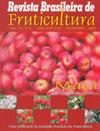肾形线虫对西番莲的致病性研究
IF 0.9
4区 农林科学
Q4 HORTICULTURE
引用次数: 0
摘要
摘要臭西番莲(Passiflora foetida L.)是一种药用植物,可作为酸西番莲果(Passiflora edulis)的砧木,用于防治镰刀菌(Fusarium spp)引起的枯萎和领腐病,但由于它是梨形线虫(Rotylenchulus reniformis)的寄主,在该线虫侵染的农田中可能会限制其种植。本研究的目的是评价香姜对西番莲生长的影响。各试验接种剂量最高的株长(152900株和78,900株,分别对应土壤402.4和207.6株/ cm3)均短于未接种的株长。因此,应将其视为西番莲发臭的病原菌,并加以合理管理。本文章由计算机程序翻译,如有差异,请以英文原文为准。
Pathogenicity of reniform nematode (Rotylenchulus reniformis) on the stinking passionflower (Passiflora foetida)
Abstract Stinking passionflower (Passiflora foetida L.) is a medicinal species that may be used as rootstock to sour passion fruit (Passiflora edulis) against wilting and collar rot caused by Fusarium spp. However, as it is a host of the reniform nematode (Rotylenchulus reniformis), the cultivation of this species may be constrained in crop fields infested by this nematode. The objective of this study was to evaluate the effect of R. reniformis on the growth of stinking passion flower. The length of plants inoculated with the highest dose of each trial (152,900 and 78,900 specimens per plant corresponding to 402.4 and 207.6 specimens / cm3 of soil) was shorter than in plants not inoculated with the reniform nematode. Therefore, R. reniformis should be considered a pathogen of stinking passionflower and be properly managed.
求助全文
通过发布文献求助,成功后即可免费获取论文全文。
去求助
来源期刊
CiteScore
1.50
自引率
20.00%
发文量
34
审稿时长
4-8 weeks
期刊介绍:
The Revista Brasileira de Fruticultura (RBF) publishes technical articles and scientific communications in the area of fruit crops, referring to results of original searches and unpublished papers in Portuguese, Spanish or English, and 1 or 2 reviews per edition, of invited authors.

 求助内容:
求助内容: 应助结果提醒方式:
应助结果提醒方式:


